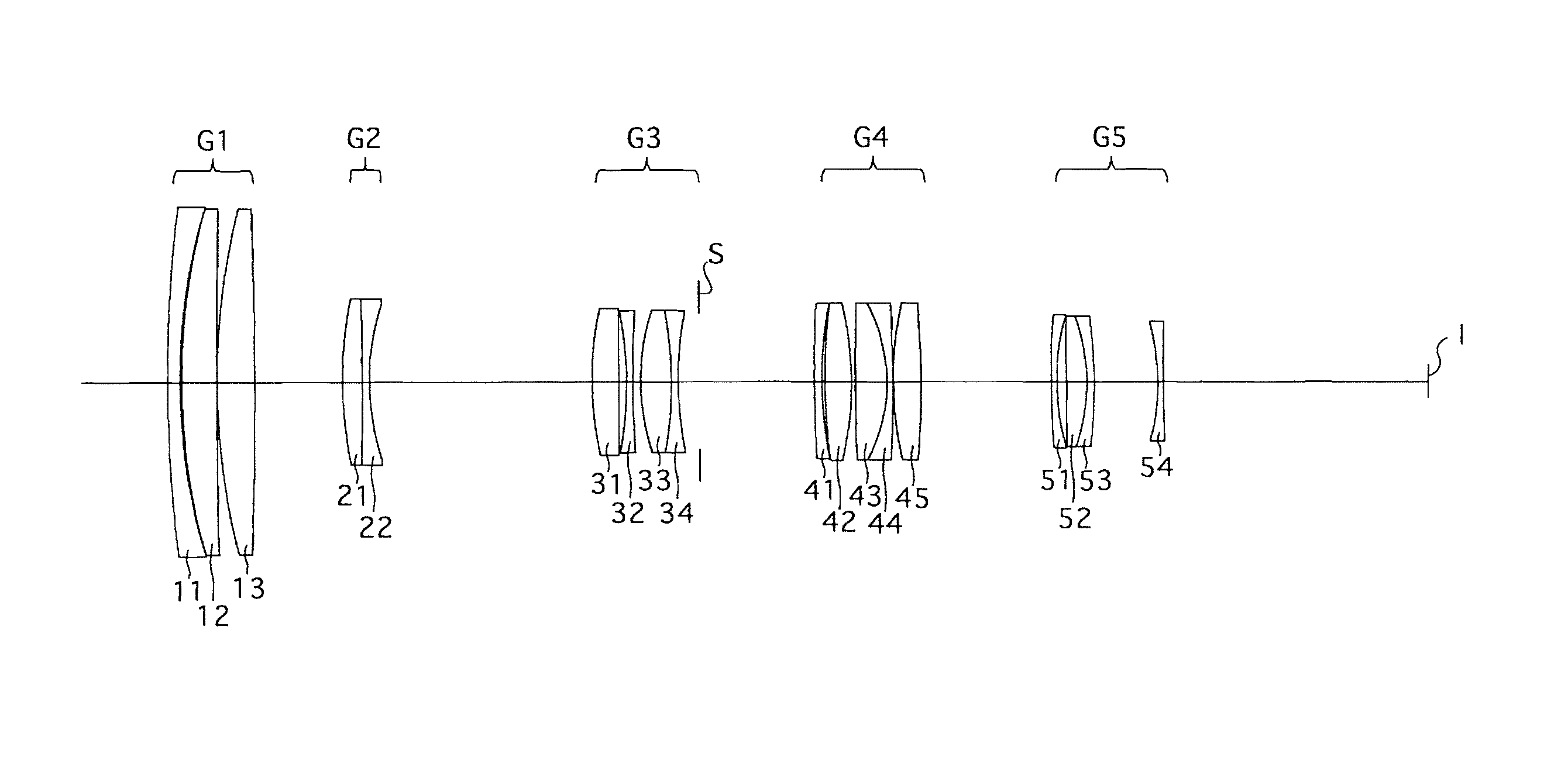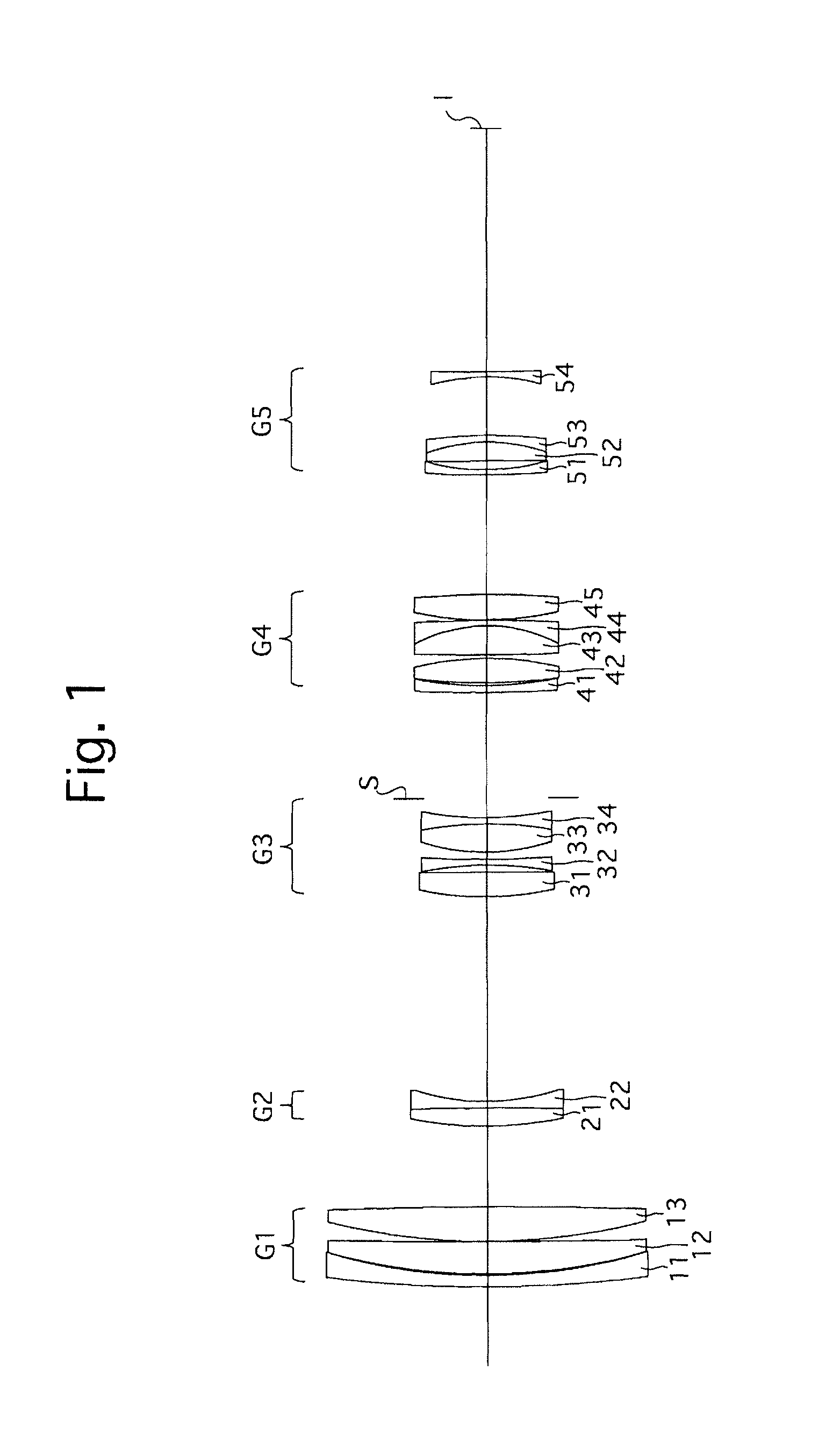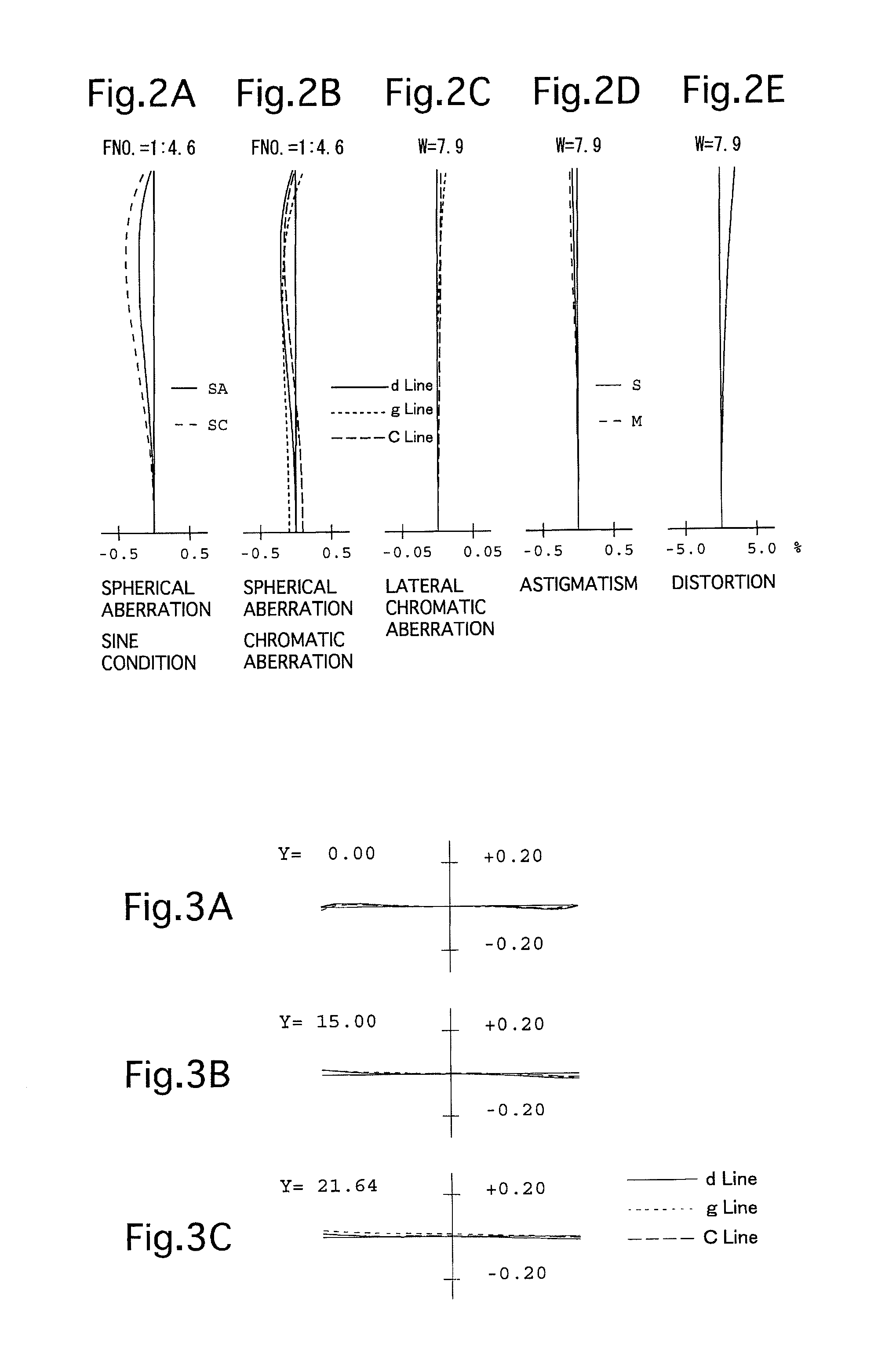Zoom lens system
- Summary
- Abstract
- Description
- Claims
- Application Information
AI Technical Summary
Benefits of technology
Problems solved by technology
Method used
Image
Examples
numerical embodiment 1
[0130]FIGS. 1 through 6 and Tables 1 through 3 show a first numerical embodiment of a zoom lens system according to the present invention. FIG. 1 is a lens arrangement of the zoom lens system when focused on an object at infinity at the short focal length extremity; FIG. 2 shows various aberrations that occurred therein; FIG. 3 shows lateral aberrations that occurred therein; FIG. 4 is a lens arrangement of the zoom lens system when focused on an object at infinity at the long focal length extremity; FIG. 5 shows various aberrations that occurred therein; and FIG. 6 shows lateral aberrations that occurred therein. Table 1 shows the lens data, Table 2 shows various data, and Table 3 shows lens-group data.
[0131]The zoom lens system of the first numerical embodiment is configured of a positive first lens group G1, a negative second lens group G2, a negative third lens group G3, a positive fourth lens group G4, and a negative fifth lens group G5, in that order from the object side. A di...
numerical embodiment 2
[0137]FIGS. 7 through 12 and Tables 4 through 6 show a second numerical embodiment of a zoom lens system according to the present invention. FIG. 7 is a lens arrangement of the zoom lens system when focused on an object at infinity at the short focal length extremity; FIG. 8 shows various aberrations that occurred therein; FIG. 9 shows lateral aberrations that occurred therein; FIG. 10 is a lens arrangement of the zoom lens system when focused on an object at infinity at the long focal length extremity; FIG. 11 shows various aberrations that occurred therein; and FIG. 12 shows lateral aberrations that occurred therein. Table 4 shows the lens data, Table 5 shows various data, and Table 6 shows lens-group data.
[0138]The lens arrangement of the second numerical embodiment differs from the lens arrangement of the first numerical embodiment with respect to the following features:
[0139](1) The positive lens element 12 of the first lens group G1 is a biconvex positive lens element.
[0140](2...
numerical embodiment 3
[0142]FIGS. 13 through 18 and Tables 7 through 9 show a third numerical embodiment of a zoom lens system according to the present invention. FIG. 13 is a lens arrangement of the zoom lens system when focused on an object at infinity at the short focal length extremity; FIG. 14 shows various aberrations that occurred therein; FIG. 15 shows lateral aberrations that occurred therein; FIG. 16 is a lens arrangement of the zoom lens system when focused on an object at infinity at the long focal length extremity; FIG. 17 shows various aberrations that occurred therein; and FIG. 18 shows lateral aberrations that occurred therein. Table 7 shows the lens data, Table 8 shows various data, and Table 9 shows lens-group data.
[0143]The lens arrangement of the third numerical embodiment differs from the lens arrangement of the first numerical embodiment with respect to the following features:
[0144](1) The negative meniscus lens element 11 and the positive meniscus lens element 12 of the first lens ...
PUM
 Login to View More
Login to View More Abstract
Description
Claims
Application Information
 Login to View More
Login to View More - R&D
- Intellectual Property
- Life Sciences
- Materials
- Tech Scout
- Unparalleled Data Quality
- Higher Quality Content
- 60% Fewer Hallucinations
Browse by: Latest US Patents, China's latest patents, Technical Efficacy Thesaurus, Application Domain, Technology Topic, Popular Technical Reports.
© 2025 PatSnap. All rights reserved.Legal|Privacy policy|Modern Slavery Act Transparency Statement|Sitemap|About US| Contact US: help@patsnap.com



